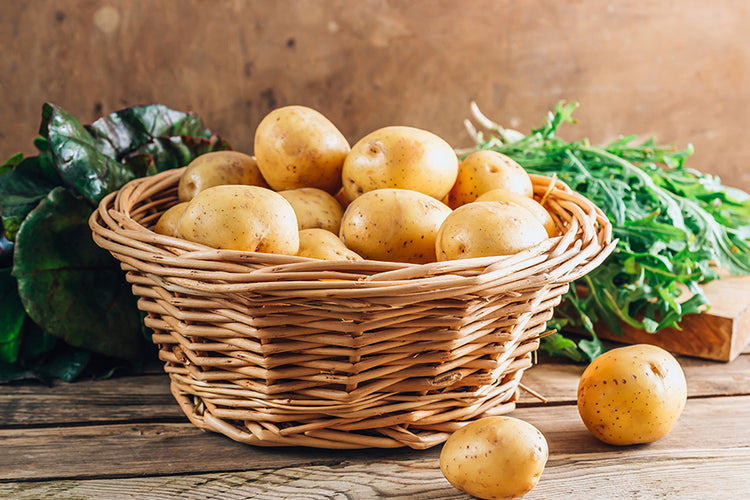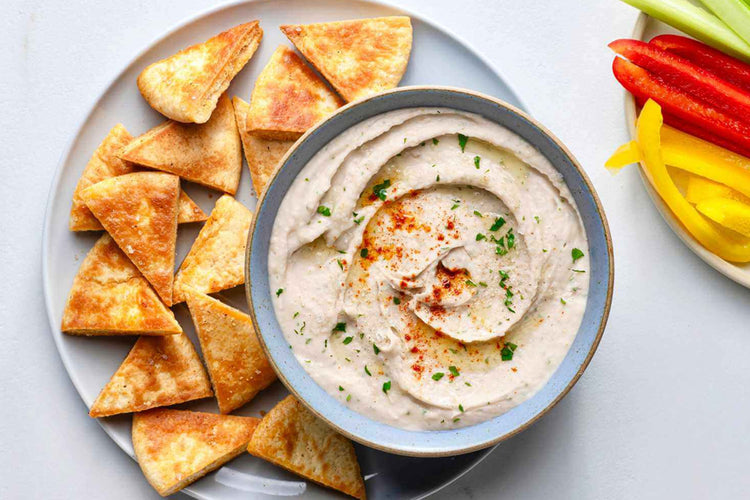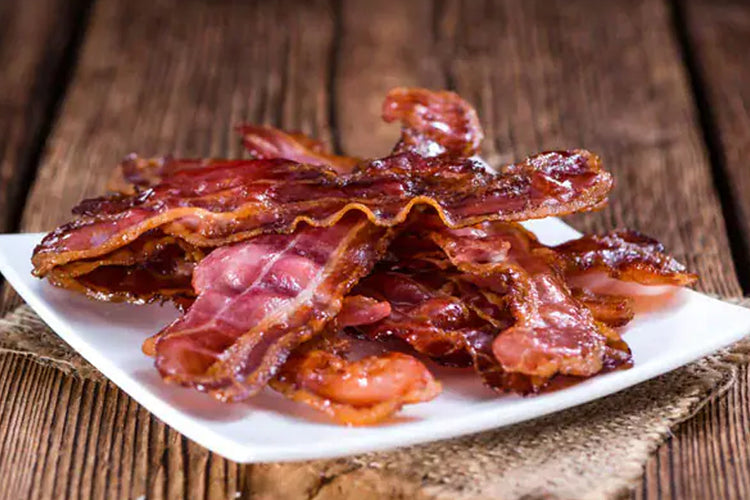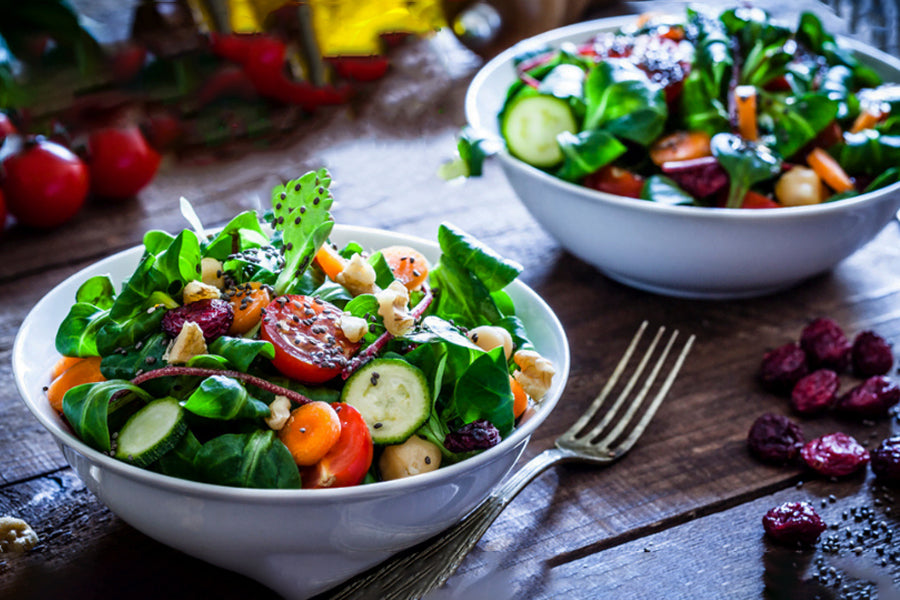As children, we were often told to finish our vegetables before indulging in dessert. We may have rolled our eyes or grumbled at the time, but as it turns out, our parents were right.
Incorporating a diet rich in fruits and vegetables can have numerous health benefits, including weight management, disease prevention, and improved gut health. One such diet that focuses on incorporating more of these nutrient-dense foods is the Volumetrics Diet.
By prioritizing low-energy-dense foods, this diet allows you to feel full and satisfied while consuming fewer calories, making it a sustainable and healthy way to lose weight and excel in your overall health.
Related Article: 7-Day Volumetric Diet Meal Plan for Weight Loss
What Is the Volumetrics Diet?
The Volumetrics Diet, developed by Barbara Rolls, Ph.D., is a weight loss plan emphasizing low-calorie, nutrient-dense foods such as fruits, vegetables, soup, and salad. Rather than focusing on what foods to avoid, the diet categorizes foods based on energy or calorie density.
Foods with high energy density have more calories and fewer nutrients per calorie, while low-energy-density foods are nutrient-rich and have higher water content. By eating primarily low-energy-density foods, such as fruits and vegetables, you can consume more food while taking in fewer calories due to their high fiber and water content.
"Volumetrics" refers to the concept that you can eat more food while consuming fewer calories. For example, you could eat 5 cups of popcorn for the same calories as 15 potato chips because popcorn has a lower energy density, allowing you to eat more food. The diet does not require counting calories or macronutrients.
What to Include on the Volumetrics Diet?

The Volumetrics Diet does not restrict any specific food based on its calorie content. The diet encourages consuming more low-energy-density foods such as fruits, vegetables, soup, and salad while reducing the intake of high-energy-density foods like cheese, fried foods, and desserts. The diet classifies foods into four categories based on their energy density.
1. Very-Low-Energy-Density Foods (Less Than 0.6 Calories Per Gram)

The first category in the Volumetrics Diet is for foods with very low energy density, containing less than 0.6 calories per gram. These foods include non-starchy vegetables such as mushrooms, broccoli, asparagus, peppers, most fruits, nonfat yogurt, and soups like chicken noodles and lentil soup.
2. Low-Energy-Density Foods (0.6-1.5 Calories Per Gram)

The second category of the Volumetrics Diet is for foods with low energy density, containing between 0.6 to 1.5 calories per gram. These foods include split pea soup, clam chowder, potatoes, tofu, beans, grapes, bananas, low-fat yogurt, bran cereal, whole-wheat pasta, light tuna, turkey breast, and tomato sauce.
3. Medium-Energy-Density Foods (1.6-3.9 Calories Per Gram)

The third category in the Volumetrics Diet is for foods with medium energy density, containing between 1.6 to 3.9 calories per gram. Such foods include hummus, avocados, feta, partly-skimmed mozzarella, tortilla, pita, bread, chicken breast, egg, salmon, lean ground beef, ice cream, pretzels, and light mayonnaise.
4. High-Energy-Density Foods (4-9 Calories Per Gram)

Category 4 in the Volumetrics Diet is for high-energy-density foods containing 4 to 9 calories per gram. Such foods include butter, bacon, desserts, chips, chocolate, peanut butter, nuts, wheat crackers, jelly, full-fat sauces like ranch and mayonnaise, and olive oil.
The Volumetrics Diet has no strict formula or guideline for how much food to eat from each category. Instead, it recommends tracking what you eat and making small swaps over time to replace high-energy-density foods with lower-energy-density options.
The diet emphasizes filling half your plate with fruits and vegetables, incorporating lean protein, low-fat foods, fiber- and water-rich foods. Starting meals with a veggie-packed dish like soup or salad is recommended to help you feel full and satisfied.
Physical activity is encouraged, such as taking up to 10,000 steps daily and tracking food and weight. The Volumetrics Diet also includes mindset and habit strategies, such as treating yourself with non-food rewards.
Related Article: 15 Nutrient-Dense Foods That Will Build Your Body Like No Other
Volumetrics Diet Pros and Cons
Like any other weight-loss program, there are advantages and disadvantages to consider when considering the Volumetrics diet. Below are some of the advantages and disadvantages associated with this diet.
Don't Have to Count Calories or Macros
One of the significant advantages of the Volumetrics diet is that it doesn't require you to count calories or macros. Instead of tracking every calorie you eat, the diet focuses on choosing the suitable types of foods that are low in energy density and high in nutrients.
By filling up on nutrient-dense, low-calorie foods, you can achieve a calorie deficit without measuring and tracking every food item you consume. This can make the diet less restrictive and easier to follow in the long run, as it doesn't require as much time and effort to plan and measure every meal.
No Foods or Drinks Are Off-Limits.
Another significant advantage of the Volumetrics diet is that it doesn't eliminate any food groups or specific foods. Unlike many restrictive diets that require you to give up certain foods, the Volumetrics diet emphasizes balance and variety, allowing you to eat a wide range of foods in moderation.
This makes the diet more sustainable and flexible, as it can accommodate different cultural or personal food preferences without feeling like you are depriving yourself.
By not labelling certain foods as "bad"or "off-limits," the Volumetrics diet promotes a healthy relationship with food. It encourages you to nourish your body with various wholesome and satisfying foods.
Focuses on Eating More, Rather Than Eating Less
One of the advantages of the volumetrics diet is that it shifts the focus from depriving yourself of certain foods to encouraging the consumption of more nutrient-dense, low-energy-density foods.
By prioritizing these foods, you can eat more significant portions and feel full without consuming excess calories. This approach can help you feel satisfied and less likely to give in to cravings or feel hungry throughout the day.
Additionally, focusing on what you can eat rather than what you can't leads to a more sustainable and enjoyable way of eating, ultimately leading to long-term success in weight management.
Might Be a More Flexible, Sustainable Plan
The volumetrics diet's emphasis on increasing the consumption of low-energy-density, nutrient-rich foods can make it more flexible and sustainable than other diets that may restrict certain food groups or require strict calorie counting.
Focusing on filling up foods that provide more volume and satisfaction for fewer calories may make people less likely to feel deprived or hungry, making the diet more sustainable in the long run.
Additionally, since there are no strict rules about what foods can or cannot be eaten, individuals can adapt the plan to their preferences and lifestyle, making it easier to stick to and maintain over time.
Improves Gut Health by Increasing Nutrient-Rich Fruits and Vegetables
The volumetrics diet emphasizes consuming nutrient-rich fruits and vegetables, providing various beneficial nutrients to improve gut health. These foods are also fiber-rich, promoting healthy digestion and reducing the risk of digestive problems like constipation. You can also take Probiotic 50 Billion CFU to help solve digestive problems.
By adding more fruits and vegetables to your diet, you may improve the diversity of your gut microbiome, which has been linked to a range of health benefits, including better immune function and reduced risk of chronic diseases. You can add Elderberry C Immunity Booster Supplements for improved immune function and overall health.
The volumetrics diet's emphasis on nutrient-dense plant-based foods may improve gut health and support overall well-being.
Related Article: 6 Prebiotic Foods to Add to Your Diet for Better Gut Health
Requires Cooking Most Meals at Home
One advantage of the volumetrics diet is that it requires cooking most meals at home. This can benefit those looking to improve their overall diet and eating habits, as cooking at home allows for greater control over ingredients and portion sizes.
Additionally, cooking at home can save money compared to eating out at restaurants. By incorporating more whole foods like fruits, vegetables, and lean proteins, the volumetrics diet can encourage individuals to experiment with new recipes and cooking techniques, making mealtime more enjoyable and fulfilling.
Limits Fats
One advantage of the volumetrics diet is that it limits fats, including nutrient-rich fats like nuts, olive oil, and avocados. While these foods can be healthy in moderation, the diet focuses on incorporating more low-energy-density foods like fruits, vegetables, and lean proteins. You can also take Whey Protein Powder to help you to stay full and satisfied.
By limiting high-fat foods, the diet can help reduce calorie intake and promote weight loss. Additionally, many of the recommended low-energy-density foods are high in fiber and water, which can help you feel full and satisfied with fewer calories.
While it's essential to consume healthy fats as part of a balanced diet, the volumetrics diet offers a balanced approach to fat intake that can support weight loss and overall health.
Calculating the Energy Density of Foods Is Time-Intensive
One potential advantage of the volumetrics diet is that it encourages people to focus on the energy density of foods, which can be a helpful tool in managing weight.
However, one downside of this approach is that it can be time-intensive to calculate the energy density of every food you eat. While the categories can provide a general idea of which food items are low or high in energy density, calculating the exact energy density of a mixed meal can be difficult.
This may make the diet less feasible for those with busy lifestyles or limited time for meal preparation. Nonetheless, for those willing to invest the time and effort, understanding the energy density of foods can be a valuable skill in maintaining a healthy diet.
Helps Manage Weight
According to a study, 132 people participating in several weight loss diet plans were studied. It was found that the volumetrics diet had the most favorable results and was the most successful in keeping the weight off for at least two years.
Not Structured Enough for Some People
While the flexibility of the volumetrics diet can be an advantage for some, it may need to be structured more for others who prefer a more disciplined approach.
The lack of specific guidelines for the amount of food from each energy-density category can be confusing and overwhelming for those who prefer a clear-cut plan.
Additionally, the diet needs to provide detailed guidance on meal timing or frequency, which may make it difficult for individuals who thrive on structure and routine. Other diets that provide more structure and guidance better fit these individuals.
What Not to Eat
The Volumetrics diet advises avoiding foods high in calories and low in filling properties and staying within the recommended calorie intake. Foods to avoid include fried and sugar-sweetened treats and fatty proteins, as they provide little or no nutritional value and do not promote satiety
Fatty Meats

- Bacon
- Sausage
- Poultry with skin
- Red meats
Processed Foods
Processed foods should be avoided as they typically have high levels of calories, fat, and sodium, which do not align with the goals of the Volumetrics diet.
- Sugary cereal
- Muffins
- Doughnuts
- Crackers
Sample Volumetrics Diet Meal Plan
On the volumetrics diet, you can have breakfast, lunch, dinner, and two to three snacks per day, along with the option for dessert.
The volumetrics diet also offers four weeks of sample meals, customized menus, and over 100 recipes incorporating low-energy-density foods. Here is an example of a typical day on the Volumetrics diet plan.
Breakfast
- Oatmeal made with skim milk, ¼ cup blueberries, 2 Tbsp. raisins, 1 Tbsp. sliced almonds
Snack
- Low-fat Greek yogurt with berries
Lunch
- Starter salad with mixed greens, cucumbers, tomatoes, carrots, and 2 Tbsp. light Italian dressing.
- Turkey sandwich on whole-wheat bread with 3 oz. turkey, 1 slice of cheese, light mayo, mustard, and vegetables of choice.
- 1 apple.
Snack
- Bell peppers and hummus
Dinner
- Vegetarian Chili.
- 1 square dark chocolate.
Should You Try the Volumetrics Diet?
If weight loss is your aim, consider trying the Volumetrics diet, which prioritizes adding nutrient-dense and filling foods to your meals. This approach may be more sustainable in the long run compared to more restrictive diets, and there is no need to count calories.
However, the diet may require more time spent cooking at home and must be more structured than other eating plans. Incorporating more water-rich fruits and vegetables into your diet can provide additional health benefits beyond weight loss, such as supporting gut health and reducing the problem of chronic diseases like heart disease, diabetes, and cancer.
Related Article: Diets Vs. Lifestyle Change for Weight Loss
Conclusion
The Volumetrics diet is a weight loss plan emphasizing eating low-energy-dense foods filling you up. The diet encourages the consumption of whole grains, lean proteins, fruits, and vegetables with high water content and low-fat dairy products.
With no calorie counting and focusing on feeling full, this diet can be a sustainable long-term option for those looking to lose weight. However, meal planning and cooking at home may require more time and effort.
Incorporating more fiber-filled, water-rich foods into your diet can offer numerous health benefits beyond weight loss, such as supporting a healthy gut and reducing the risk of chronic diseases.
Reading List
Article Sources
- Ello-Martin, Julia A., et al. "Dietary Energy Density in the Treatment of Obesity: A Year-Long Trial Comparing 2 Weight-Loss Diets". The American Journal of Clinical Nutrition, vol. 85, no. 6, June 2007, pp. 1465-77. PubMed Central, https://www.ncbi.nlm.nih.gov/pmc/articles/PMC2018610/.











